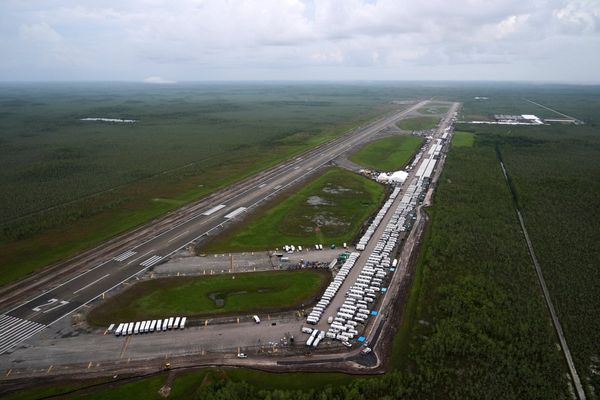Look out, truffle growers in Western Australia's South West — the south coast has been identified as the state's next hub for the underground delicacy.
While the area around Manjimup in the South West is the state's truffle capital, parts of the Denmark shire are proving perfect for producing the highly desired fungi.
Alan Bradshaw runs Splendid Valley truffles, based in Kentdale, 90 kilometres west of Albany.
He tripled production this year from last and is expecting more growth for the industry in the region.
"I think there's going to be a push perhaps towards seeing more [truffle orchards] set up in the Great Southern," he said.
Truffles need a lot of water to grow, a resource the Great Southern is not lacking.
"The Denmark, Albany region is fantastically positioned in relation to the weather, rainfall. You know we get hot summers, we get cool winters ... I think it's absolutely ideal," Mr Bradshaw said.
He has produced about 200 kilograms of truffles this year and is expecting that number to double again in 2023.
"If you look after your trees properly, the truffle fungus expands through the trees, and if you look after the trees and the truffle, it'll continue to compound," he said.
Thriving in wet climates
Adam Wilson is the managing director for Great Southern Truffles and will soon plant truffle seedlings in Great Southern locations, Denmark and Mount Lindesay.
"The Great Southern ... there's no better growing area, I don't believe, across Australia," he said.
He said the latitude is excellent for growing truffles and has fantastic potential.
"There is plenty of water in the Great Southern, so irrigation is not such a concern for most people. "
"Water is a valuable part of growing truffles purely because they are about 85 per cent water," Mr Wilson said.
Climate change impacts
With climate change looming, Mr Bradshaw isn't ruling out the potential for more northern truffle orchards to move south.
"We've seen a migration south with vineyards, watching shows on the ABC Landline, about people moving their vineyards from mainland Australia down to Tasmania, for example, so we may end up seeing the same thing happen with truffles," Mr Bradshaw said.
"If we do get climate change coming through with less rain, I think Manjimup may be impacted.
"We'll see."
Mr Wilson is heading to Europe shortly to see how their truffles are holding up given the current climate conditions.
"They've had a drought for the last eight months; we'll see what conditions that's left the landscape in [and] whether their truffles are growing," Mr Wilson said.
"It's super important to have that water."
Call for more education
Mr Wilson has been in the truffle industry for 15 years.
He believes there needs to be more education around growing truffles to encourage more producers to enter the market.
"Part of what I'm doing is to introduce that to teach people that you know, growing troubles isn't super complicated ... and it's all education," Mr Wilson said.
"It seems in the early days, we thought it took a lot longer to start producing. We potentially realised that [the truffles] are already there, but we just didn't have good enough dogs to find them."
"Growing a truffle, it starts from the formation of the truffle underground, but you've got all these parts to consider to harvest it out of the ground, and you need good dogs to do it," he said.







